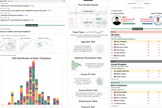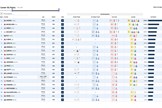What is Data Golf?
Last updated:
Don’t think too hard. It’s not a trick question. Data Golf does exactly what it says on the tin. But here’s why this golf stats site is far more than numbers on a page.
In a sport defined by numbers, golf has to work harder than most to evolve how it presents the myriad of metrics that are becoming increasingly accessible to its fanbase.
Whether you are data-driven, or of a more numerophobic nature, it’s difficult to engage and understand the nuances of what differentiates the best from the rest in professional golf without some appreciation for the statistics behind the scorecards.
And while tour-specific websites provide a plethora of Strokes-Gained (SG) data, breaking down each aspect of the game into a sprawling series of performance indicators that you never knew existed. It’s hard to know where to start with it all.
What really matters? And what is simply nice to know.
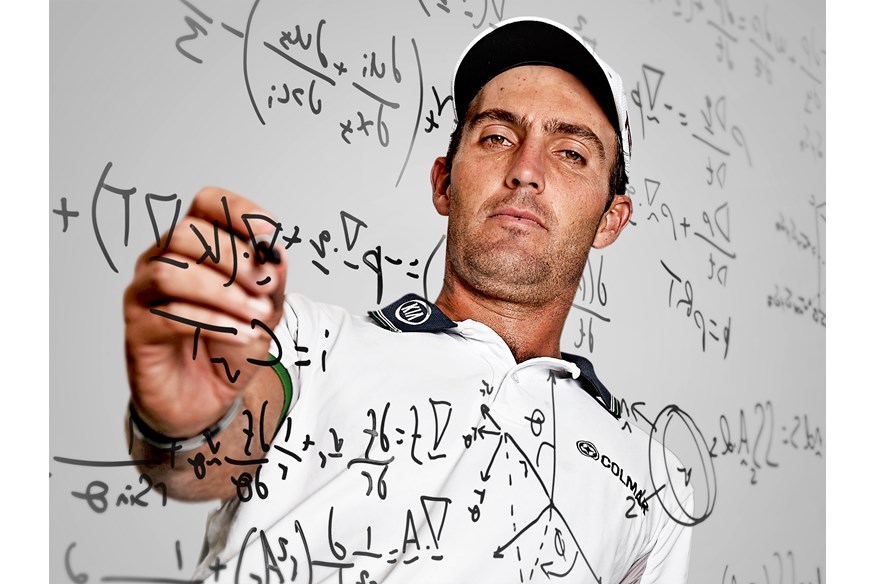
This is why Data Golf exists
The numerical brainchild of Toronto-based brothers Matt and Will Courchene, who have amassed a following of over 73,000 data-curious golf fans and shrewd betters, squirelling through the spectacular visualizations and novel analytics to find hidden meaning in the matrix.
In the Courchene’s own words: “Data Golf is a website focused on statistical analysis and data visualization in professional and (to a lesser degree) amateur golf.
“Our goal is to be the most comprehensive source of data-driven insights in golf and betting, while building beautiful data visualizations and applications along the way.”
To achieve this, the brothers, who each hold a Masters in economics, scrape publicly available data from sites including PGA Tour, LIV Golf, DP World Tour, and OWGR each week to refresh the current state of play in golf.
- Is distance or accuracy more important when choosing your next golf driver?
- Fairways are overrated: How this ‘deadly combo’ is redefining off-the-tee success
Further, thanks to partnering with the PGA Tour, Data Golf has access to shot-level data from the ShotLink programme, allowing users to drill down into the technical capabilities of each player competing at this level.
As a data-led journalist, Data Golf is my go-to resource when searching for objectivity to support my ramblings. And while some features understandably sit behind a paywall, there is still a vast amount of insight available at your fingertips for free. Easily navigable and brought to life via clean and visually engaging charts and tables.
Upon landing on the Data Golf homepage, you’ll be greeted by a colorful array of player skill profiles, head-to-heads, results, rankings, historical course stats, betting tools, tournament projections, and more leaderboards than you can shake your driver at.
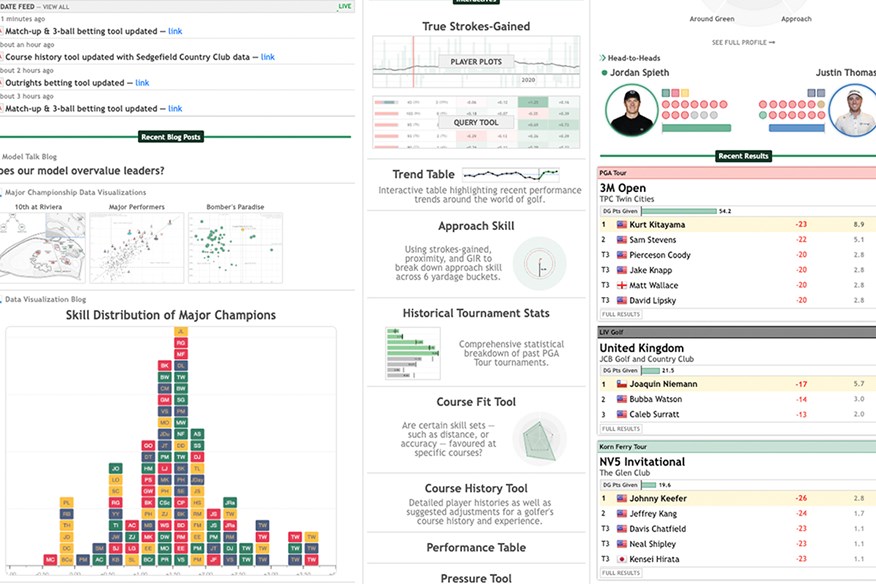
The Edoardo Molinaris amongst you will want to dive straight in. But even if aestically pleasing Excel dashboards don’t get you going like me, maybe some of the practical applications on offer will.
The gambling aspect is more of a necessary by-product than the driving inspiration behind the platform’s creation, as admitted by the bros, but nonetheless provides a means of monetizing their efforts.
However, where Data Golf really stands out from the competition is through their field strength-adjusted rankings, which account for the strength in depth of each competition, with the most recent rounds being assigned more weighting.
At the time of writing, these Data Golf Rankings see Jon Rahm and Bryson DeChambeau slot in at No.3 and No.4, behind Scheffler and McIlroy, with LIV’s most prolific winner Joaquin Niemann at No.9.
Seems a little more sensible than the 16th, 71st, and 98th positions they currently occupy in the Official World Golf Rankings (OWGR), don’t you think?
And with LIV still fighting an uphill battle to receive OWGR points, Data Golf Rankings represent the most objectively credible way of comparing performances between tours, offering a more equitable system than the redundant one currently in operation.

The Data Golf Points model
Another unique metric you will see across the site is something referred to as Data Golf Points, used to grade performances according to finish position and tournament quality.
And while field-adjusted SG statistics perform a similar function, they do so on a round-by-round basis. Useful for predicting future performance and evaluating past performances, but not always as intuitive for comparing seasons and careers.
The case in point referenced here is Phil Mickelson’s best two adjusted SG performances (2016 Open Championship: +6.6; finished 2nd, and the 2006 BellSouth Classic: +6.4; won). Neither of which jump out as being the most memorable of Phil’s glittering six-major career.
In contrast, the points-based system places more weight on winning and higher finishes, and sets a floor for poor performances with zero points awarded.
It’s a novel and fun way of seeing how the careers of golf’s greats stack up against each other, as you can see below. Why not head over after reading this to see how fast Scottie Scheffler is climbing the ladder?
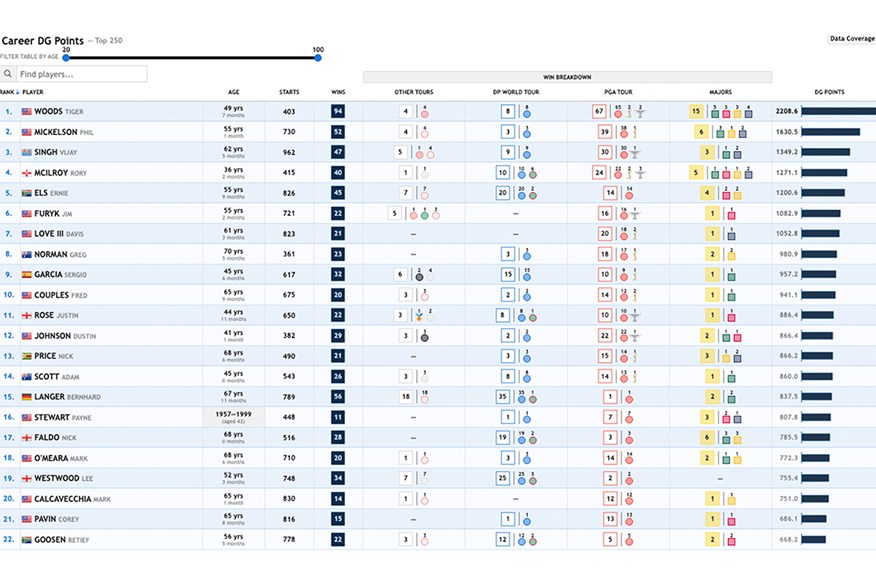
While there are far too many gloriously geeky tools and visualizations for me to keep rambling on about, it’s worth pointing out a few easy access points into Data Golf that may help you navigate the site if you’re not a data guru.
Firstly, there’s an engaging monthly newsletter where the brothers pick a handful of findings that summarize the current landscape of professional golf, offering unique interpretations from the data that you’ll be hard pressed to find elsewhere on the interweb.
Then there’s the live blogs, which took place throughout the four men’s majors this year. Once again, this is a great way of engaging with golf data in a relaxed way and seeing some alternative infographics to those randomly popping up on the TV broadcast.
Finally, there’s a super useful FAQ page where you can find answers to just about everything that isn’t intuitive from playing around on the site.
One word of warning, though. If you’re under the illusion that your newfound data-backed knowledge will help you shoot lower scores overnight…
“We both have experienced exponential declines in the quality of our game,” said Will.” I just can’t hit a good shot anymore.”
- We tested every 2025 golf driver and this one shocked us the most
- I’ve found THE best golf ball for your game in 2025… and used a robot to prove it!


